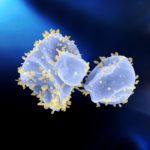Link to Pubmed [PMID] – 36146653
Link to DOI – 184210.3390/v14091842
Viruses 2022 Aug; 14(9): 1842
Bacteriophages play key roles in the dynamics of the human microbiome. By far the most abundant components of the human gut virome are tailed bacteriophages of the realm Duplodnaviria, in particular, crAss-like phages. However, apart from duplodnaviruses, the gut virome has not been dissected in detail. Here we report a comprehensive census of a minor component of the gut virome, the tailless bacteriophages of the realm Varidnaviria. Tailless phages are primarily represented in the gut by prophages, that are mostly integrated in genomes of Alphaproteobacteria and Verrucomicrobia and belong to the order Vinavirales, which currently consists of the families Corticoviridae and Autolykiviridae. Phylogenetic analysis of the major capsid proteins (MCP) suggests that at least three new families should be established within Vinavirales to accommodate the diversity of prophages from the human gut virome. Previously, only the MCP and packaging ATPase genes were reported as conserved core genes of Vinavirales. Here we report an extended core set of 12 proteins, including MCP, packaging ATPase, and previously undetected lysis enzymes, that are shared by most of these viruses. We further demonstrate that replication system components are frequently replaced in the genomes of Vinavirales, suggestive of selective pressure for escape from yet unknown host defenses or avoidance of incompatibility with coinfecting related viruses. The results of this analysis show that, in a sharp contrast to marine viromes, varidnaviruses are a minor component of the human gut virome. Moreover, they are primarily represented by prophages, as indicated by the analysis of the flanking genes, suggesting that there are few, if any, lytic varidnavirus infections in the gut at any given time. These findings complement the existing knowledge of the human gut virome by exploring a group of viruses that has been virtually overlooked in previous work.

